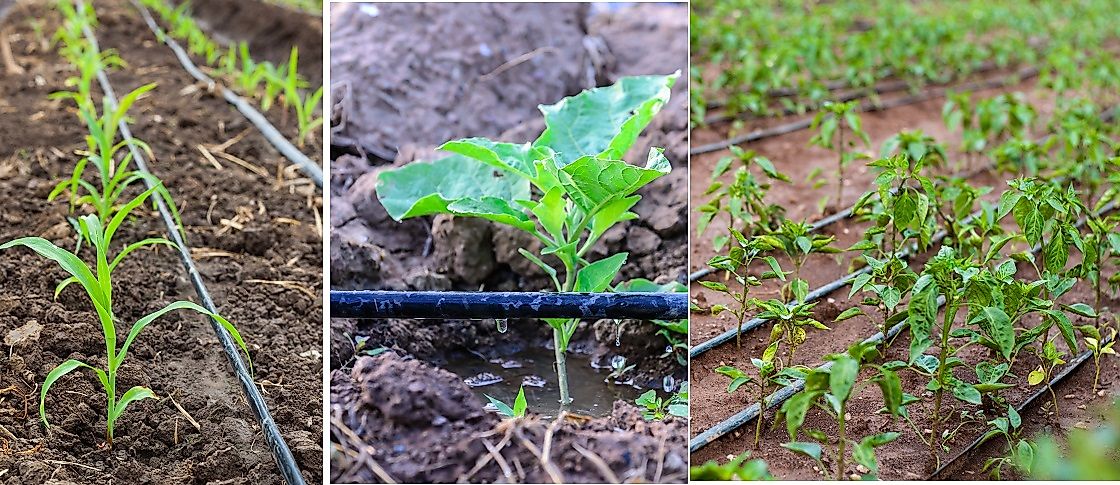Drip Irrigation And Its Role In Modern Agriculture

Rationale For Drip Irrigation
Drip irrigation is the watering method in which water is supplied directly to the root zone of cultivated plants and regulated in small portions using a dispenser-dropper. The system allows significant savings of water, as well as fertilizer. It diminishes the labor costs, shortens energy usage and length of pipelines. Drip irrigation also provides other benefits, such as an earlier harvest, prevention of soil erosion, reducing the likelihood of disease spread and weeds. Initially it became widespread in greenhouse production, later it became widely used in the open ground for the cultivation of vegetables, fruits, and grapes. The greatest effect the use of drip irrigation provides in the areas of insufficient moisture.
Process and Equipment
A drip irrigation system normally consists of a water extraction unit, a filtration unit, a fertigation unit (fertigation is the application of fertilizers along with irrigation water), a general pipeline (the source of water for the drip irrigation), return piping, and drip lines. With help of micro-droppers, water is supplied in the form of small discrete droplets or micro jets. This method is suitable for greenhouses, smaller plants, and bushes. There are also micro sprays which supply a larger amount of water to accordingly poured large areas, compared with micro rays, which are used for irrigation of medium and large shrubs, hedges, small trees. Combined multiple sources can irrigate large trees. Drip lines are divided into two categories: drip tubes and drip tapes. In the first case it is the weld less plastic tube with a diameter of 16 to 20 mm and wall thickness from 100 microns to 2 millimeters with droppers attached to them, and external, overheads, or integrated droppers built inside. Tapes also called drip lines are used, which are made of polyethylene and wrapped in a tube and glued or welded thermally. When seam is welded, the machine lives small holes, also called micro spaces, which in turn form the necessary components of the dropper - filter holes and labyrinth turning laminar flow into turbulent flow. Emitter is the last element of the system. The thickness of tapes' wall usually ranges from 100 to 300 microns. Fittings are also used in the drip irrigation system providing connection between drip irrigation tape with the main pipeline.
Significance In Modern Farming Around the Globe
The widespread use of drip irrigation kicked off in Israel, which was wanting in irrigation water in the 1950s. Once introduced it became a boom in irrigation technologies, not least it has been ecologically friendly method saving the soil and complex microorganism system from erosion processes. In India farmers having drip irrigation units or sprinklers of same type reaping rich harvests which far exceeding productivity of past century technologies predominant in the country. The vast majority of India's farmers are still using archaic methods: they water their crops by flooding fields with water from wells, or, if they are really short of funds, they just wait for the monsoon rains. Market steadily adopts to the needs of small plot owners, offering affordable models of drip irrigation units of large variety available for online purchase and easy manual set up. Italian farmers use drip irrigation to increase field productivity by 35-40%. On the broad lands wind used to blew away spray water of the standard agricultural sprinklers, and thus prevented even watering, resulting in lower yields. Installation of new drip irrigation systems has also helped the Italian farmers halve water consumption, especially valuable in drought years.











